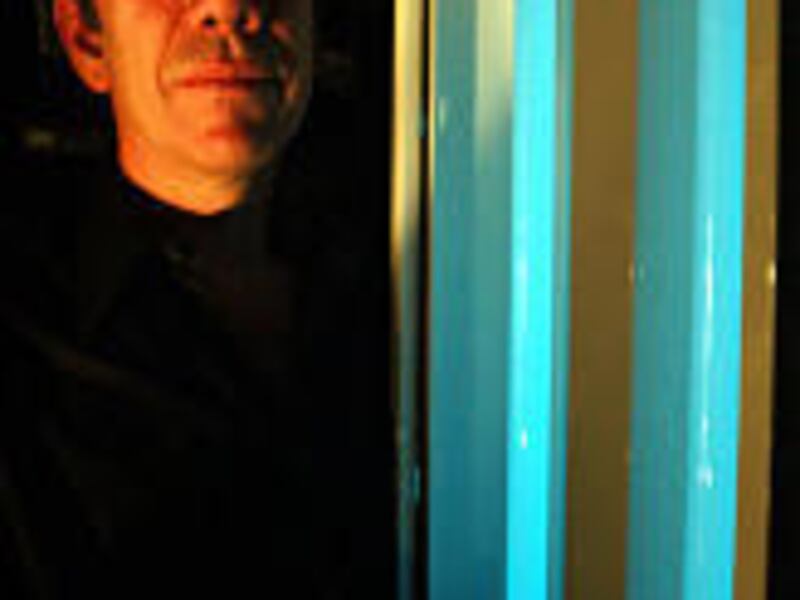DENVER (AP) — When the lights went out, a light bulb went on in the ponytail-clad cranium of Charles Bolta.
About his own light bulb.
Less than a week after the big Northeast blackout, Bolta's Fort Collins-based American Environmental Products hit the publicity trail for the firm's glow-in-the-dark fluorescent light bulb.
Cast aside the firm's technical jargon about "scotopic-rich phosphor blends" and "strontium aluminate after-glow," and here's what the bulb does:
Continues to shine after the power goes off.
Not bright light, but a dim, blue-greenish glow that would illuminate hallways or staircases enough to let office workers find their way out of a blackened building. Or a submarine, or an underground mine, or anywhere else where a power outage could leave people in the dark.
The bulbs operate on the same principle as other photo-luminescent materials, such as the stick-on stars that can adorn a child's bedroom ceiling, in which the material is energized by natural or electric light, then glows in the dark.
But lighting experts say they're not aware of the technology ever being used in a fluorescent tube.
"I've never seen anything like it," said Robert Cross, CEO of Mule Lighting, an emergency-lighting products company based in Providence, R.I.
Cross said his firm is testing the light and then may consider a manufacturing or distribution agreement with American Environmental Products.
Bolta began work on the bulb technology after the Sept. 11, 2001, terrorist attacks, and in a fortuitous coincidence of timing, was ready to launch the bulbs' marketing campaign just as the lights went out in the Northeast.
"It's taken us a few years to get the bugs out," said Bolta, 48, who has worked in the lighting business since 1973. "Now we think we have a really exciting product."
The bulbs look like conventional fluorescent tubes and operate the same under normal conditions, except that Bolta's bulbs are "full spectrum," emitting a whiter light than normal fluorescents. Many lighting experts say full-spectrum lights provide a better quality of light and can improve worker productivity in some cases.
But the big difference in Bolta's "Glow-Lux" tubes becomes apparent when they're switched off or when the power is cut.
For about one hour, the bulbs will cast a glow that provides about 20 percent of the illumination of a normal fluorescent tube.
After an hour, the bulbs dim but still emit a faint glow for about 24 hours.
Bolta said he has talked about the tubes with officials from the Pentagon, U.S. Navy and Coast Guard and several commercial lighting firms.
No deals have been signed, although Bolta said he believes the bulbs will have strong marketability.
Bolta said he hopes to sell the tubes at an initial price of about $30 each and eventually work the cost down to $20, close to the price of regular full-spectrum fluorescents.
He said the tubes can be built with protective coatings that make them stronger than regular bulbs and more resistant to shattering.
The product gets cautiously positive reviews from lighting experts who have reviewed information on the Glow-Lux Web site and who are familiar with photo-luminescence.

